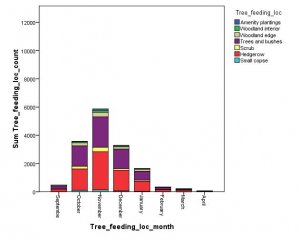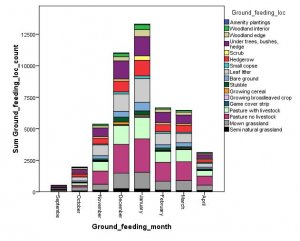Species
Bohemian Waxwing, Bombycilla
garrulus (the one we usually see)
Japanese Waxwing, Bombycilla
japonica
Cedar Waxwing, Bombycilla cedrorum
Description
Waxwings are characterised
by soft silky plumage. They have unique red tips to some of the wing feathers
where the shafts extend beyond the barbs; in the Bohemian and cedar waxwings,
these tips look like sealing wax, and give the group its common name. The legs are short and strong,
and the wings are pointed. The male and female have
very similar plumage.
All three species have
mainly brown plumage, a black line through the eye and black under the chin, a
square-ended tail with a red or yellow tip, and a pointed crest. The bill,
eyes, and feet are dark. Calls are high-pitched, buzzing or trilling monosyllables
Diet
These are arboreal birds that
breed in northern forests. (This for me is a
fascinating bit of study)
Their main food is fruit,
which they eat from early summer (strawberries,
mulberries, and serviceberries) through late summer and autumn (raspberries, blackberries, cherries, and
honeysuckle berries) into winter (juniper
berries, grapes, crab apples, mountain ash fruits, rose hips, cotoneaster
fruits, dogwood berries, and mistletoe berries)
They pluck fruit from a
perch or occasionally while hovering.
In spring they replace
fruit with sap, buds, and flowers. In the warmer part of the year they catch
many insects by gleaning or in mid-air, and often nest near water where flying
insects are abundant.
Movements
They are not true
long-distance migrants, but wander erratically outside the breeding season and
move south from their summer range in winter.
In poor berry year’s huge
numbers can erupt well beyond their normal range, often in flocks that on
occasion number in the thousands
The last time I managed to
take pictures of this stunning bird was 1st January 2013 at Howe
Bridge crematorium, Atherton. Examples below.
Text references from the
internet, Collins Bird Guide, and The Birds of the Western Palearctic published
by Oxford.
Poem by Velimir Khlebnikov
Where The Waxwings Used To
Dwell

Where the waxwings used to
dwell,
Where the pine trees softly
swayed,
A flock of airy momentwills
Flew around and flew away.
Where the pine trees softly
whooshed
Where the warblewings sang
out
A flock of airy momentwills
Flew around and flew about.
In wild and shadowy
disarray
Among the ghosts of bygone
days,
Wheeled and
tintinnabulated.
A flock of airy momentwills
A flock of airy
momentwills!
You're warblewingish and
beguilish,
You besot my soul like
strumming,
Like a wave invade my
heart!
Go on, ringing warblewings,
Long live airy momentwills!
































